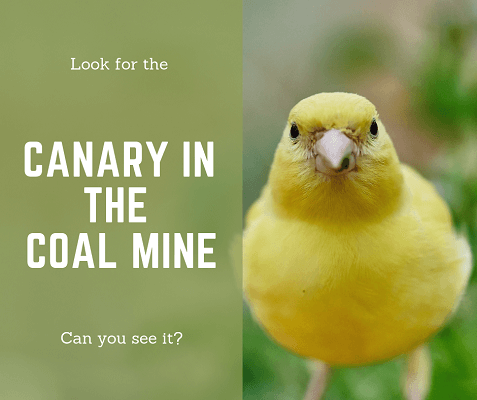
YouTube / iTunes / Spotify / Radio Public / Pocket Casts / Google Podcasts / Breaker / Overcast
Listen to ArtisanEnglish.jp posts & lesson intros here.
Phrase: Canary in the coal mine
Many commonly used English language phrases originated from literal meanings.
Until quite recently, the lives of men depended on a canary in the coal mine.
Yes, it’s true.
Before modern mine ventilation methods were invented, methane or carbon monoxide gasses could build up in a coal mine.
Both of these gasses are life-threatening to humans and canaries too.
The coal miners would carry caged canaries into the mine with them.
If the amount of methane or carbon monoxide increased, the canaries would die before the gas concentration became deadly to humans.
The canary in the coal mine was an early warning system.
The canary’s death became a harbinger of death for the coal miners unless they got out of the mine immediately.
As a little bit of extra information for you, British miners continued to use canaries in their coal mines until 1986.
These days the phrase canary in the coal mine is used to mean a small indicator could be a sign of something much more dangerous or that something is going wrong.
For example, frogs are quite delicate and cannot tolerate even low levels of toxins in an environment.
If local people or scientists suddenly notice that the frog population in an area has decreased, this drop could be the canary in the coal mine, indicating that the amount of pollution is increasing.
On a different note, a slower-than-standard learning rate for a child could be a canary in the coal mine, indicating that the child may have a learning disability or require extra help.
As another example, when playing, children suddenly become quiet; it’s usually a sign that they are doing something they shouldn’t.
When their children are concerned, silence is the canary in the coal mine for parents.
Flesch-Kincaid Readability Test
This post is understandable by someone with at least a 9th-grade education (age 15).
On the Flesch-Kincaid reading-ease test, this post scores 57.
The easier a passage is to read, the higher the score on a scale of 0 – 100.

